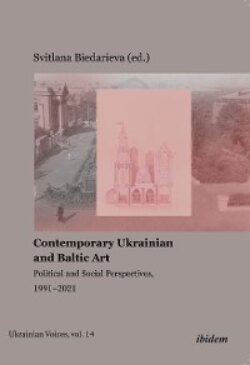Читать книгу Contemporary Ukrainian and Baltic Art - Группа авторов - Страница 6
На сайте Литреса книга снята с продажи.
Mapping Transformations in Latvian and Baltic Art
ОглавлениеIeva Astahovska
The transformations from nationally driven postsocialist to transnationally oriented capitalist societies that have occurred over recent decades in Latvia and other Baltic states have largely defined both the social and political course, as well as the cultural context. Art has played an important role in reflecting these transformations: it has analyzed relations between locality and global contexts; addressed issues of belonging and identity, history, and memory; considered the complexity of the past while dealing with the present; and responded to the discourse of nationalism and its deconstruction. In this context, the legacy of the socialist past—the life between “after” and “not-yet-completed changes”—is particularly significant. Through their interest in the past, artists from the Baltic region have sought to analyze the present in terms of its social, political, and economic reality, its alternative political and social promises, and its failures.
However, although a number of Baltic researchers (Kelerta 2006; Kalnačs 2016; Annus 2017, 2020) have used the discourse of postcolonialism and decolonialism to analyze the historical implications of the region and their ongoing impacts today—and to untangle the complexity of this process—these connections have been analyzed much less in the context of visual art. It therefore seems important to address them, and thus this article is intended to provide some much-needed reflection on these entanglements. In doing so, it aims at a better understanding of the complex or even paradoxical nature of transformations in the region.
Yet, it is important to note that these transformations have not only brought the region and its art closer to the global scene, they have also created new distances. Through critical reflection, as well as the search for strategies to challenge and form alternative models to a center–periphery logic, artists and curators have also been mapping the context and relations between local, regional, and global art spaces and their artistic positions. This article examines how these issues have been reflected through postsocialist and postcolonial entanglements in the works of Baltic artists from different generations (specifically, Oļegs Tillbergs, Andris Breže, Kai Kajlu, Anna-Stina Treumund, Eglė Rakauskaitė, Kaspars Goba, Kristina Norman, Ieva Epnere, and Vika Eksta, among others), as well as in several exhibitions that have contextualized their work in relation to the Baltic art scenes.
